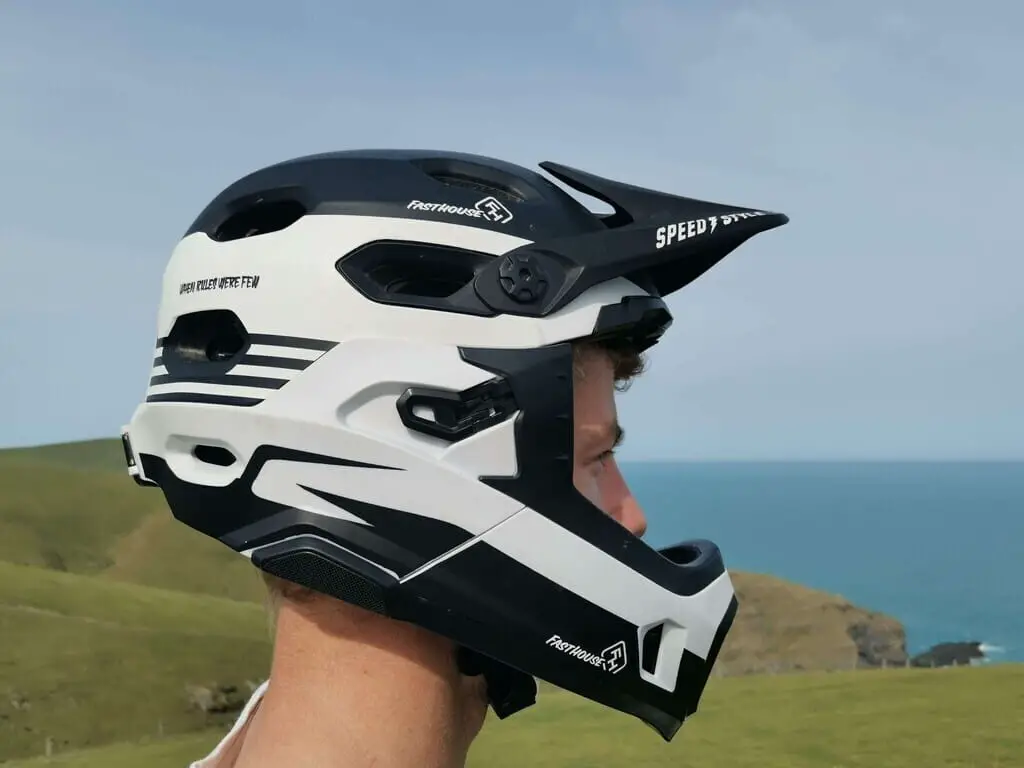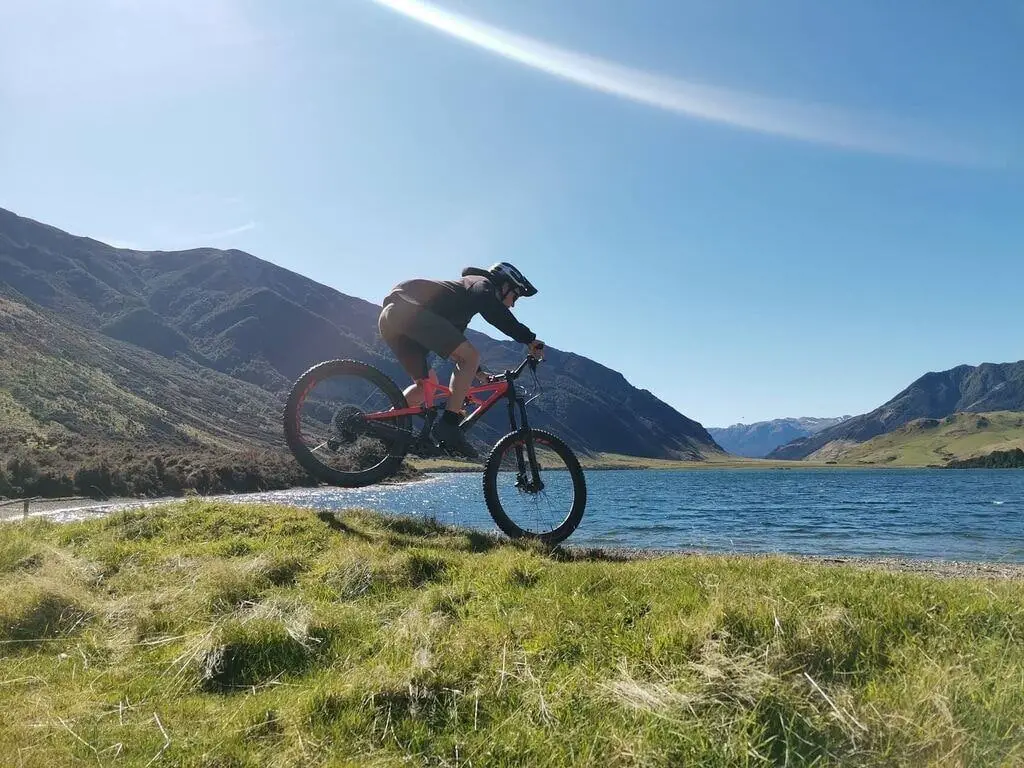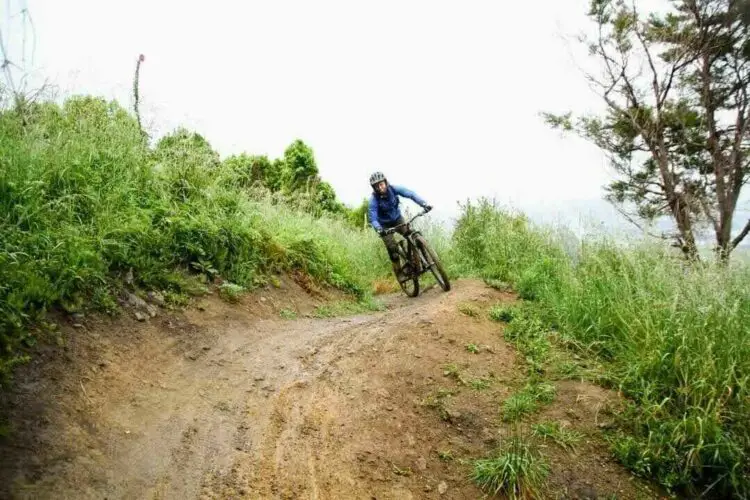To wear a full-face helmet or to not, that is the question. A bit cliché there, but ‘When should I wear a full-face helmet’ is becoming a common question as mountain bike riders become a lot more safety conscious.
As mountain bikers take on more and more extreme obstacles, the line of protective wear has to improve at an equally fast rate. More riders are opting to wear a full-face helmet for everyday riding. And given the added improvement in safety, it is easy to see why.
Are full-face helmets safer?
Yes. A full-face helmet is designed for downhill riders who ride at higher speeds, with generally larger consequences. The full-face helmet was initially adapted from motocross helmets. These motorcross or motorcycle helmets require a lot of protection as the rider’s race at very high speeds.
Here is three reasons why full face helmets are safer:
1. More rigorous testing and standards
Downhill helmets have a separate certification from your typical all-mountain helmet. In the U.S., all helmets must meet the CPSC standards and additionally, there is the downhill certification ASTM F1952-15.
Note that not all full-face helmets need to have the downhill certification. And some helmets can meet the downhill certification without being a full-face! For example, the Bell Super 3R is a full-face helmet but does not have the downhill certification. While the Giro Tyrant is a half-shell helmet with downhill certification!
2. More Coverage
Full-face helmets have a chin bar as well as additional protection around the rear of the helmet and above the ears. The chin bar prevents damage occurring to your face if you go for a face slide or land face-first into rocks or the trail.
There are so many stories out there of riders wishing they had worn a full face to prevent the damage to their face. But also there are also stories of people thankful they were wearing a full face when they face planted off the bike!

The additional coverage keeps more of the head safe from an accidental knock or sharp objects hitting the head. It ultimately means it reduces the potential for a concussion or head injury.
3. Extra features
All newer full-face helmets have some sort of anti-rotational technology implemented in the liner. Anti-rotational technology works to reduce the rotational energy from an angled crash to the rider’s head. This is generally achieved by rotating the outer shell relative to the rider’s head. The most common anti-rotational systems to keep your eye on are MIPS, SPIN, Koroyd and Turbine 360.
Some anti-rotational systems work to reduce the impact from linear crashes, too. This is in addition to what the EPS foam layer provides.
Dual-density foam is a reasonably new technology that, as the name suggests, has two layers of foam with different densities. The outer layer is generally harder to stop sharp objects penetrating the helmet and also will reduce more energy in a high-speed impact. The inner foam layer is softer so that the rider has a more ‘cushioned’ fall, and it reduces the chances of a concussion.
The popularity of dual-density helmets is rising. It is a standout technology you should consider when looking at purchasing a full-face helmet.
If a full-face is safer, why not wear one all the time?
All mountain and cross-country riders tend not to wear a full-face helmet all the time for a number of reasons
- A full-face is heavier than an open-face helmet
The chin bar and additional coverage add a fair bit of weight to the helmet. An average half-shell helmet will weigh around 350g, while an average full-face will likely weigh around 800g, so it is a decent difference. The full face tends to be bulkier too, which is what adds the necessary protection to keep your head protected.
- A full-face is much less breathable and less ventilated
The main downfall of full-face helmets is that they sacrifice ventilation for protection. You will get very hot climbing and riding hard in a full-face helmet. The majority of mountain bikers going for long rides, decent climbs, or riding hard will not wear a full-face as it just isn’t comfortable.
It gets very hot when there isn’t wind blowing through it- so it’s fine for the descent, not so good for climbing or going slow.
Some manufacturers have tried to make the helmets cooler, but generally, some protection has to be sacrificed in some way. Check out this post for the best ventilated full-face helmets on the market at the moment.
- A full-face limits visibility
The visor is longer and often fixed in place. And the more important reason the coverage around the side of the face, making it hard to see what is around you.
This is more of a problem on two-way tracks where you have to be very alert for riders coming at you in the opposite direction. Not only is your vision hindered, but the helmet also covers your ears!
When is a full-face necessary?
It might feel a little overkill sometimes when you’re riding an easy or intermediate trail to be wearing a full-face. However, accidents happen, and they often happen fast and when you least expect it. You might get a branch in the spokes or a knock to the handlebars which sends you flying.
You can’t really prepare for these sorts of things as a beginner, so wearing a full-face can save you a lot of damage.

On the other hand, if you decide the risk is low and you feel comfortable, having a full face helmet probably is an overkill, and you will likely be more comfortable without it.
A full-face helmet is hot and uncomfortable at low speeds. But if you believe the risk of a face plant is high, then it is probably worth it. If you are jumping, sending it off drops, going fast, or tackling a tricky segment, a full-face is necessary. At a bike park, you may even look out of place without you downhill helmet. Basically, if you are outside your comfort zone, a full-face is necessary.
I recall when I started out as a teenager, I didn’t wear a full face as I didn’t want to appear better than I was. I didn’t want to look like I was taking on expert trails at the park when I was only riding the intermediate trails! This is very much the opposite of what I should have done. Wearing a full-face as a beginner, especially as I was beginning to take on trails above my skill level or tackling new features, would have given me far more confidence in my safety!
What to Look out for When Buying a Full-Face Helmet?
- Make sure it is downhill certified, if downhill is what you are using it for!
- If you wear glasses or goggles, make sure the helmet is compatible with either eyewear.
- Make sure the cheek pads are comfortable. Having pads squash your face isn’t much fun.
- Ensure the chin strap is adjustable. You don’t want a loose helmet.
- Ensure the visor doesn’t obstruct your vision. Some are not adjustable, and the length of the visor can mean it gets in the way (particularly when riding up hill).
Convertible Helmets
For an in between option, I can highly recommend a convertible helmet. This allows you to have a helmet that you can remove the chin bar when you don’t want a full face, and reattach it when you do.
Pretty often I will ride up the hill with my chin bar hooked over my bum bag, and then I can attach it once I get to the top of the hill. This saves getting hot and sweaty on the climb, and gives me the safety for the descent.
The other win is that you get a full face helmet and a half shell for the price of one!
If you are interested, check out this post on the best convertible helmets, or more specifically a couple of my favorites – the MET Parachute MCR and the Bell Super Air R vs Super DH
Final Remarks
Pretty much, if you are going to tackle a trail or obstacle you think might be a bit of a challenge, a full-face helmet is a good option. Don’t be afraid to wear a full-face on the easy trails. Everyone is at different levels of ability, and no one is going to call you out for being ‘too safe’. And if you think you look like a tool wearing a full-face, just remember that it still beats facial reconstruction surgery!
It only takes one incident to pay the price of too little protection.

If you aren’t completely convinced on purchasing a full-face helmet, a convertible helmet may be more what you are looking for. See our top rated convertible helmets on the market for more information.

